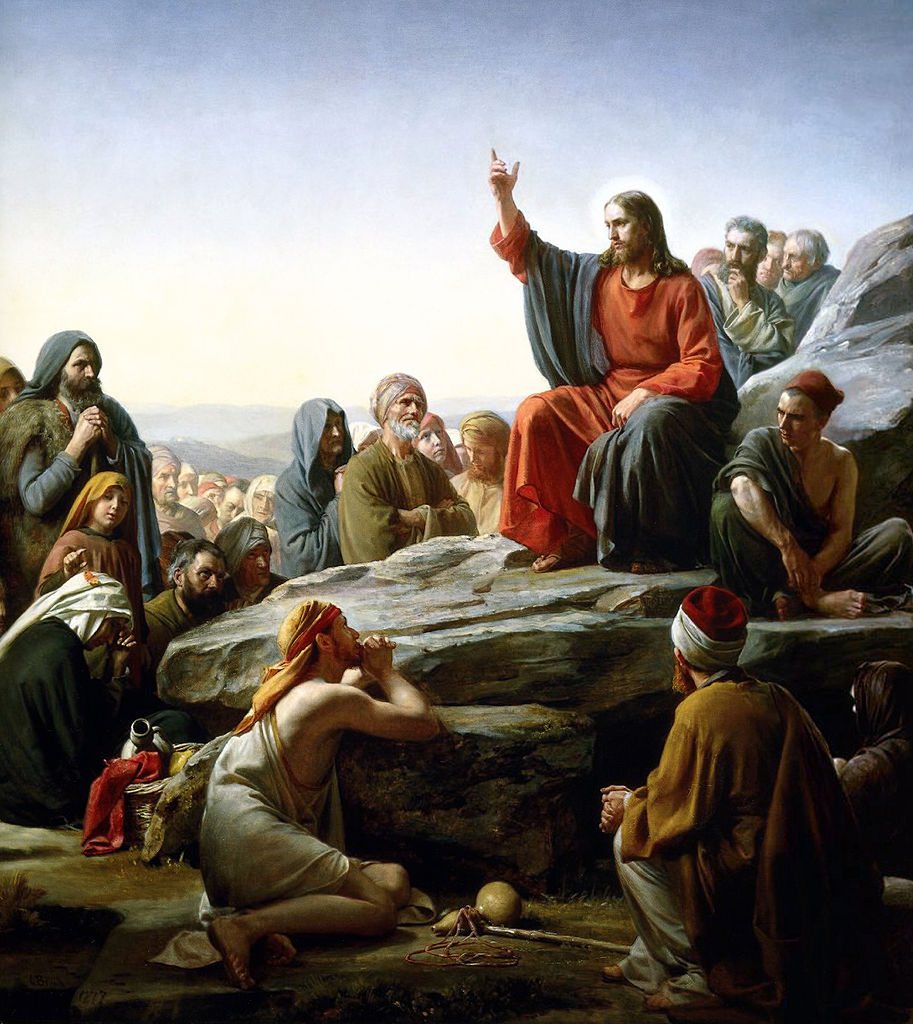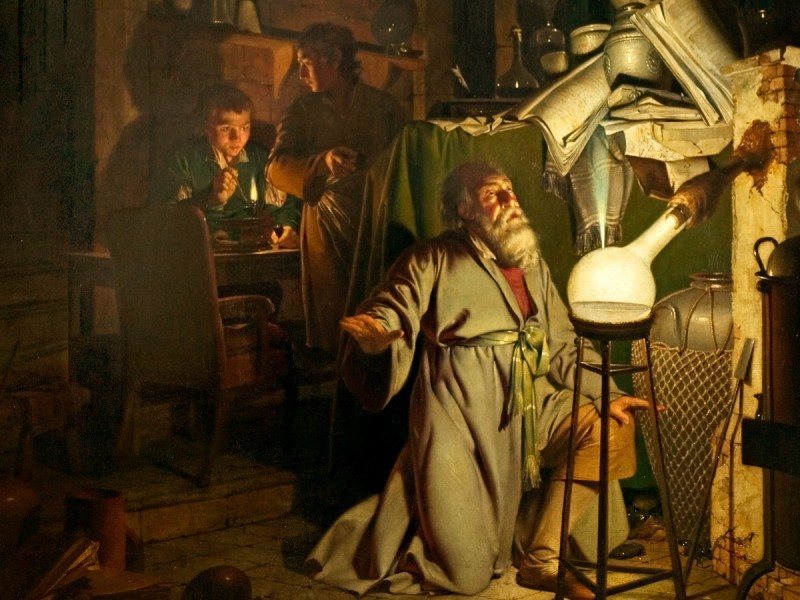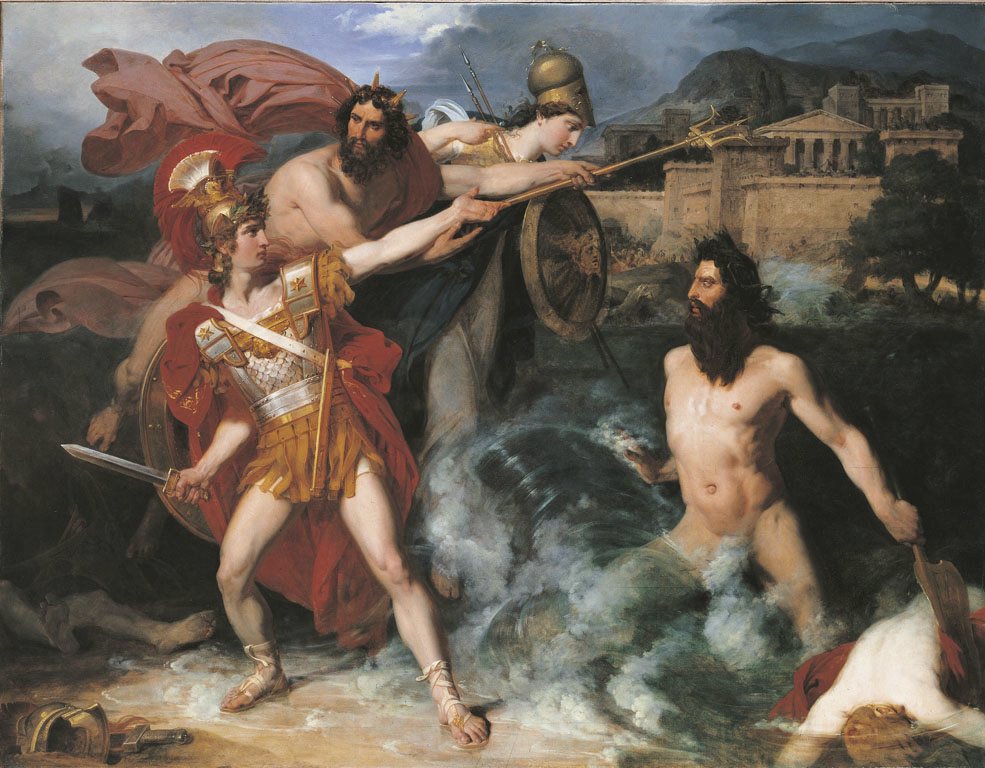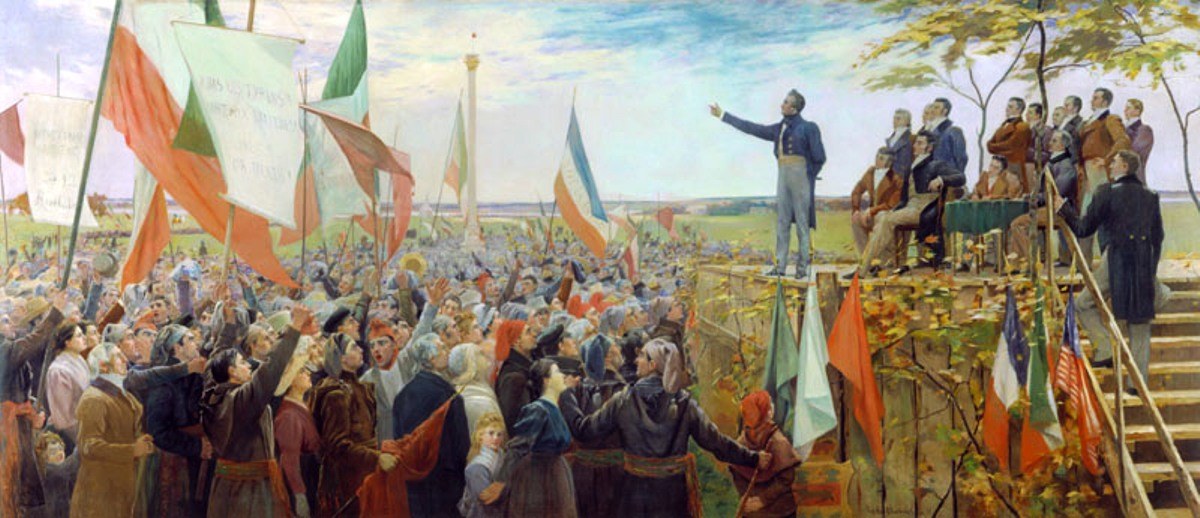There has been a surge in the use of the word, Logos, in recent years as enlightened circles of Western scholars are rediscovering their roots. Thankfully, thinkers like Jordan B. Peterson are popularizing the term once more.
Now more than ever, scholars must understand the meaning of this earth shattering word. Analyzing its history is the key to unlocking the indispensable philosophical tradition that accompanies it.
The Christian conception of the Logos is the climax resulting from the synthesis of Greco-Roman philosophy and Judaic belief. Hence, we must understand both to comprehend the Logos’ two-fold history.
The Greco-Roman Logos
To understand The Logos (logic, account, or language) of the Greek tradition we must start at the beginning with magic.
The ancient Greeks believed in magic. Among them, the Goēs (γόης) was a magician that would wander from town to town interpreting dreams, telling fortunes, practicing necromancy, pyromancy, hydromancy, and other acts of divination. The suffix “-mancy” means “divination by specified means.”
To continue on this etymological dig, divination means, “the practice of seeking knowledge of the future or the unknown by supernatural means.” While magic was ultimately the practice of gathering information, not raising armies of the dead, summoning the titans, or any other Hollywood nonsense.
One of these practices of divination by the Goēs was speaking in tongues, that is, glossolalia. In this ritual, the Goēs would babble a series of syllables that poured out of the mouth as pure gibberish.
So, what? Why are we concerned about some ancient man babbling gibberish? Well, because the ritual reveals three revolutionary ancient concepts.
- The spirit world had a language, logic, or structure behind it as opposed to being pure chaos.
- Human beings have the ability to communicate and engage with the spirit world through language.
- Communicating with the world of the divine can be used to reveal truth.
To the ancient Greek Goēs, the world of the divine was not just shear chaos. The forces of the universe had a logic behind them that gave them shape. Their form could be accessed and interacted with using a special language. Hence, the reason for glossolalia.
Language needs a structure in order to exist. If the spirit-world had a language, it meant that it had a structure. The idea that the world of the divine had an order behind it was a revolutionary paradigm.
So, to understand and practice the magic of life, one had to speak the language of life, i.e. biology. The ancient Greeks did not know biology, rather they knew the language of life. This is what biology means: bios (Greek for “life”), and logos (-logy) , which is language or logic. To know biology was, and is, to know the words that relate to life and what those words mean, so that one can “converse” with life.
It’s like “talking car” with auto-mechanics today. When we say someone knows how to “talk car,” we don’t mean that they spend hours physically talking to their car about how the day went. What we mean is that they understand the words and concepts that facilitates their interactions with automobiles.
Every word in a language represents a concept or piece of knowledge. Thus, a science, as a “systematically organized body of knowledge on a particular subject,” is logos, is language.
Therefore, when the Goēs ascribes language to the spirit world, he starts to engage in building the science of the divine. The more magic words he creates, the more concepts he use to describe the divine.
Divination by the Goēs would start the association with language, with the divine, and with knowledge. These associations would eventually evolve into the Logos.
In addition, the Goēs would profess truths about the cosmos by speaking in tongues. This act assumes that one could draw useful knowledge from the unknowability of the divine.
Iambilichus (245 AD – 325 AD), a Neoplatonist philosopher, connected speaking in tongues with the act of prophecy. He believed that prophecy was the possession of a divine spirit which “emits words which are not understood by those that utter them; for they pronounce them, as it is said, with an insane mouth (mainomenό stomati) and are wholly subservient, and entirely yield themselves to the energy of the predominating God.”
But weren’t the Greeks a bunch of rationalists? Didn’t they move away from that mystical mumbo-jumbo? For a time, the pendulum of philosophy swung from the mystical Goēs to the rationalist Pre-Socratics.
Certainly, the Pre-Socratics (Sophists) were less concerned with the immaterial and more concerned with the material world around them. In their camp are the “physikoi,” a word that can be translated as the naturalists or physicists. To the Sophists, man was the measure of all things and that justice, truth, and love were simply meaningless social constructs. (This is why the postmodernists are simply “Neo-Pre-Socratics”).
But who was talking about the Logos? Heraclitus. Later known as, “the weeping philosopher,” he believed that the world was in a constant state of flux and that nothing truly lasted. In other words, everything was just dust in the wind. But he also believed that different forms of change had their own logos (logic, word, cause, or account) behind them.
It wasn’t long till the pendulum of philosophy swung away from the rationalists to a war veteran named, Socrates. He argued that the Greeks had to go back to looking within themselves for truth, not artificially constructing it.
He pointed to the inscription at the oracle of Delphi that read “Know thyself.” Socrates instructs his followers to see the world with their mind’s eye. A world perceived with the senses was a world of distorted and fickle shadows. This is the meaning of the allegory of the cave.
In the internal world of the forms was truth itself. In this way, we can understand the Socratics as going back to the ways of the Goēs.
Justice, virtue, and truth were immaterial forms existing in a separate reality from our perceptions. Humanity could access this realm using the mind’s eye and engaging in philosophic discourse. Divination from the inner realm of the incorporeal hearkens back to the magic of the Goēs.
Another key idea Socratic idea was that that there a was a form of forms called “The Good” which was the ultimate culmination of virtue. In texts like the Euthyphro he places “The Good” above kings and the gods themselves. He argues that Man worshipped the gods because they were Good, as opposed to worshiping Goodness because it came from the gods. To Socrates the Good transcended Zeus.
But what connects Athens to Jerusalem? In a word, Rome.
The Stoics took on the mantle of Greek thought and particularly Platonist ideas. The Stoics would also grapple with the Logos, sometimes translated as. “the Master-Reason.” They believed that the universe was ordered by this Master-Reason, so that human beings, as rational animals, had a mental connection to the Logos.
The Stoic praise of rationality and logic caused them to argue for the control of one’s emotions, employing reason over passion. With this self discipline, one could live in harmony with the Logos.
It is critical to note that they did not believe that the Logos was God! For example, Cicero claims that Chrysippus thought “the world itself” was “a god, and also the all-pervading world-soul.
This is closer to a rationalist pantheism than the mystic all-loving God of Christendom.
It is not until the synthesis of Judaic thought with Greco-Roman rationality that we arrive at the Western idea of a Christian God.
The God of Abraham and Moses
The God of the Jewish tradition, and the believers of that God, create the culture which allows for the emergence of Christian thought. Their scriptural stories would provide rich ideas that would be mobilized into the philosophy behind the Christ, the Logos made flesh.
The first idea that is central to understanding Judaism and Christianity is the association between language and structure.
In Genesis, the lord of all creation creates in a very specific way. He does not mold matter with his hands, rather he speaks. God said, “Let there be light” and then there was light (Genesis 1:3). From God’s spoken words, all creation comes about.
The connection between language and structure is reaffirmed in the story of the Tower of Babel (Genesis 11).
As many may know, humanity attempts to build a great structure, a tower that will rival even God. After disapproving the pointless venture, God halts mankind’s best-laid plans in very strange way. He does not crush the strcuture, or toss a lightning bolt at it to blow it to smithereens.
Rather, he causes all the people constructing it to speak a different language. In their scattered frustrations, they abandon the project in confusion.
The message is clear. With language comes structure. The two are cosmically connected. From God’s words comes forth creation. Interestingly, this connection between language and structure parallels the knowledge of the Goēs.
The most revolutionary idea contributed by the Jews is that of monotheism. Monotheism is more than the belief that there is one God (Exodus 20), for it caries with it the implications of that belief.
The polytheist sees a world of separate and chaotic forces. Each of these forces is represented by a god or goddess. For example, wisdom is manifest by Athena, and erotic love is represented by Aphrodite. These goddesses don’t always get along and their rivalry can lead to chaos. In fact, it is the quarrel between Athena, Hera, and Aphrodite that leads to the Trojan War.
But to the Monotheist, there is only one cosmic force or God that reigns supreme above all things. All other forces are idols, false gods, that are ultimately powerless and yielding to the supreme authority of the one true God (Exodus 32).
In this way, all forces are really one thing. Any true dichotomy would destroy the monist nature of the one true God.
For example, one might believe that the world was divided into the combating spirits of pure good and pure evil. If so, one would believe in the duality of two ultimately irreconcilable “logics” behind the universe. This would prevent one from concluding that there is a single logic behind the universe, or Logos.
This monotheistic God is so ultimate that he transcends even the kings of the nations that believe in him. When King Obadiah calls the Prophet Elijah an enemy of Israel for critiquing the corruption of the nation, Elijah retorts that he serves a power that is higher than mortal kings (I Kings 18).
The transcendence of the Hebrew God bears a resemblance with The Good, for the authority of both go beyond the power of kings and other gods. Thus both God and the Good are the highest of all things – and therefore God is good (Psalm 100:5).
Another critical aspect here is the dialogue between God and his people. God is an active force who can converse with his people, such as, Abraham who is specifically called by God (Genesis 12). And God also sends messages though his angels (Genesis 18, and Daniel 9:21).
This dialogue between God and mankind reveals three things:
- People derive moral truths and righteous action by God alone.
- God and humanity are locked in an covenant, a sort of cosmic contract.
- If the contract is not followed, humanity risks downfall and possible annihilation.
God and his messengers reveal to his people the righteous course of action (Exodus 14), and moral truth (Exodus 21:12-14).
This process of divination once again parallels the Goēs who can communicate with the divine and reveal truths.
God becomes the logic behind the universe from which humanity can derive its morality. For example, Moses receives God’s Commandments from God himself. Only then does he share these laws to the people (Exodus 20).
What this shows is that God, the ultimate force behind the universe, demands something from us. If humans comply to the will of God, they will fulfil his covenant.
If humanity breaks his covenant, they risk annihilation, so that ). God reigns down fire and brimstone on the cites of the faithless (Genesis 19). Therefore, those who are in accordance with the logic of the universe shall continue their lineage or existence, while those who are not face death and destruction (Genesis 15).
Christ: The Incarnation of the Logos
Israel is where the hammer meets the anvil. The Christian idea of Logos is forged by the synthesis of Greco-Roman and Judaic thought.
The ancient thinkers like Philo had already started to merge these two great traditions. To Philo, the thoughts of the Creator were equated with Plato’s forms. The culmination of these two were the Logos in Philo’s philosophy.
Before jumping to conclusions, one must realize that this does not mean that Christ studied under Philo or anything like that. But, it does show that ideas from both traditions were circulating among Jewish scholars. More importantly, it shows that there were efforts to link these traditions.
The ultimate synthesis would come with Jesus who is the messiah, the Christ, and the logos (sometimes translated as the Word) incarnate (John 1:14).
Christ and his followers equated the Logos with love (I John 4:8). It is the claim that Love is the ultimate truth behind existence.
To the Christian, the chaos of this world is an illusion. Chaos is just undeciphered order. Because beyond the incalculable madness is the one singular force, ultimately one logic which is God (John 1).
The logos is the ultimate account behind a world of Heraclitan change. It is the single force, logic, explanation, cause, and goal behind veil of our perception. It is God
Nothing is exempt from the Logos, thus it knows all things. Nothing stands apart from the logic of the universe. It is the Master-Reason. Nothing is free from cause, from account, from being. On the contrary, all things are connected, trapped in a single dialectic, one cosmic dialogue (Ephesians 4:6).
The Logos is the ultimate language of languages, the structure of structures. Love is the harmony of being, the universal tongue from which all systems flow as mere dialects of it.
When we stray from love, we are mistranslated (I Corinthians 13). Though never cut off completely (Romans 14:7), we suffer from our inability to be understood. We are thwarted in our frustration from reaching our potential. Thus, we abandon the Tower of Babel.
The Logos is the logic behind Creation. That is to say Love is the Logic behind Creation: “In the beginning God Created the heaven and the earth” (Genesis 1:1). In parallel, the apostle John begins his gospel with “In the beginning there was the Logos” (John 1).
Thus, the Logos is the force and logic of creation and of being. The apostle Paul writes “If I speak in the tongue of men and of angels, but have not love, I am only a resounding gong or a clanging cymbal. If I have the gift of prophecy and can fathom all mysteries and all knowledge, and if I have a faith that can move mountains, but do not have love, I am nothing” (I Corinthians 13).
Thus, language and being are tied together. What is new is the addition of love in this formula of existence.
From this passage we once again see how language and being are tied together. What is new is the addition of Love in this formula of existence.
The Logos is characterized by the attributes that Socrates gave to Truth (AKA the Good). The logos is eternal, it is constant, everlasting, all-powerful, and knows all things. It is Truth.
This is mirrored by Paul when he states that “Love is patient, Love is kind. It does not envy, it does not boast, it is not proud. It does not dishonor others, it is not self-seeking, it is not easily angered, it keeps no record of wrongs. Love does not delight in evil but rejoices in the truth. It always protects, always trusts, always hope, always preserves” (I Corinthians 13).
Paul’s description of love mirrors Socrates understanding of The Good. Early Christians were very aware of this affinity. Thus, St. Justin Martyr calls the ancient Greek philosopher, “Saint Socrates.” and he also considered both him and Heraclitus as Christians!
Yet the Logos is much more active than The Good. Like the Master-Reason of the Stoics it possesses a demanding quality which engages the rational minds it reveals itself to.
To the Stoics, there wasn’t just a Master-Reason that minded its own business and could more or less go unaccounted for. Rather, the logic behind the universe seemed to demand something from the mankind. Through rationality, mankind could come to know its will.
The Hebrew God mirrors this. God demands something from his people. He is an active force in their lives. The Lord tests them, bears witness, and reveals himself through their history.
But what does the Mater-Reason and the Hebrew-Christian God want from us!? The same thing as the Logos – virtue, the highest of which is love (Colossians 3:14).
To believe in the Logos is to believe in love, to believe in truth, that the light conquers the darkness. Love is a power that transcends kings, nations and even other gods.
The Logos is not some bearded fellow throwing lighting bolts or physically reaching out for David. It is warmth of our hearts, the faith held in our fellow human beings, and the light of the mind. Though it is always testing us, we are ever vigilant. That is what it is to believe in God, the Logos.








